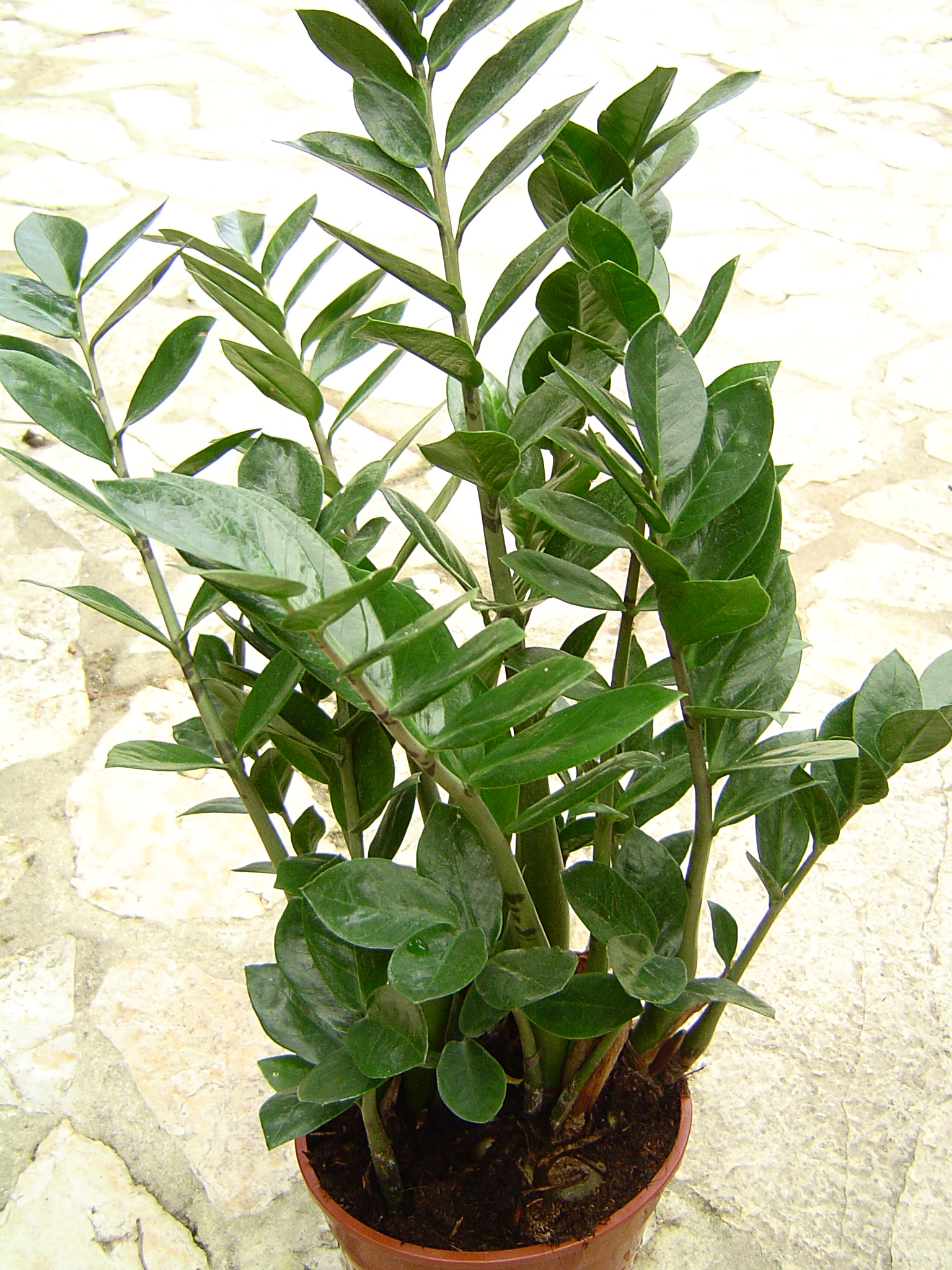- Zamioculcas
Taxobox
name = "Zamioculcas zamiifolia"

image_width = 240px
image_caption = A cultivated specimen
regnum =Plant ae
divisio = Magnoliophyta
classis =Liliopsida
ordo =Alismatales
familia =Araceae
genus = "Zamioculcas" Schott
species = "Z. zamiifolia"
binomial = "Zamioculcas zamiifolia"
binomial_authority = (Lodd.) Engl. [cite web
url=http://www.ars-grin.gov/cgi-bin/npgs/html/taxon.pl?313019
title=Zamioculcas zamiifolia information from NPGS/GRIN
publisher=www.ars-grin.gov
accessdate=2008-03-24
last=
first=]"Zamioculcas" is a genus of
flowering plant in the familyAraceae , containing the single species "Zamioculcas zamiifolia". It is atropical perennial plant native to easternAfrica , fromKenya south to northeasternSouth Africa .The botanical name derives from the superficial similarity of its foliage to that of the
cycad genus "Zamia ". Botanical synonyms include "Caladium zamiaefolium, Zamioculcas loddigesii" and "Z. lanceolata". It has no established common name, but is sometimes known by the trivial names "ZZ plant", "aroid palm", "fat boy", and "eternity plant".It is a
herbaceous plant growing to 45-60 cm tall, from a stout underground,succulent rhizome . It is normallyevergreen , but becomesdeciduous duringdrought , surviving drought due to the largepotato -like rhizome that stores water until rainfall resumes. The leaves arepinnate , 40-60 cm long, with 6-8 pairs of leaflets 7-15 cm long; they are smooth, shiny, and dark green. Theflower s are produced in a small bright yellow to brown or bronzespadix 5-7 cm long, partly hidden among the leaf bases; flowering is from mid summer to early autumn. All parts of the plant arepoison ous if ingested.Cultivation
"Zamioculcas" is grown as an
ornamental plant , mainly for its attractive glossy foliage. It can be kept outdoors as long as the temperature does not fall below around 15 °C (59°F); best growth is between 18 °C to 26 °C (64.4° - 78.8 °F). Hot temperatures give an increase of leaf production. In temperate regions, it is grown as ahouseplant . Over watering may destroy this plant; erring on the side of dryness is preferable to risking tuber rot. Do not use leaf shiners. A quarter or eighth strength liquid fertilizer such as fish emulsion or worm-cast liquid may be used once a month at the warmest period for potted specimens. Bright, indirect light is best for Zamioculcas, although it will tolerate very low light. Some sun will be tolerated, very early in the morning for hot districts – morning or afternoon for cooler districts."Z. zamiifolia" may be propagated by leaf cuttings: typically, the lower ends of detached leaves are inserted into a moist gritty compost and the pot enclosed in a polythene bag. Though the leaves may well decay, succulent bulb-like structures should form in the compost and these may be potted up to produce new plants.
Usage
The leaves of the plant have been used by "sjamans" in the jungles of Ghana to relieve severe stomach ache. When consumed in large quantities it can be deadly. However, when cultivated with coffee for years, the plant can obtain heavy psychedelic effects, which are known by the sjamans in Ghana. This marvel of nature has also been used to relieve severe pains; however, the exact ingredients of the mix are not known outside the tribal structure of Ghana.
References
External links
* [http://members.chello.at/norbert.anderwald/Zamioculcas/index_e.htm Zamioculcas page]
Wikimedia Foundation. 2010.
